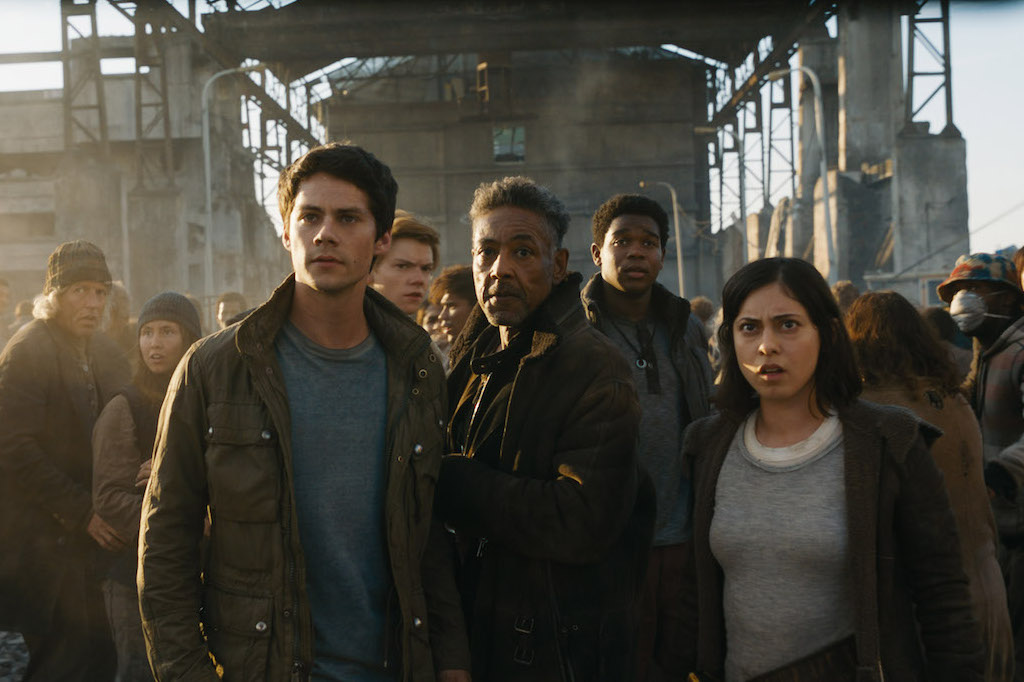Why We’re Obsessed With Teen Dystopian Films
Here are the reasons we can't get enough of teen-based dystopias.


All of your burning questions will be answered in the explosive final chapter of the Maze Runner saga, in which Thomas and his friends must survive the most dangerous maze of all.
Dystopian films have experienced a sharp rise of late. While in the past, speculative fiction films may have explored a more hopeful future, these days they feature chilling themes of oppressive regimes, destroyed infrastructure and fights for survival. And we just can’t get enough.
You could argue that the change of pace is an indication of how we see the future, a reflection of our collective cynicism. Or you could just argue that seeing actors in tattered clothing looks cooler.
And while there are a tonne of films based on dystopian futures out there, there’s one subset of dystopian film that’s outperforming all others: those aimed at teens.
With the release of Maze Runner: The Death Cure, the epic conclusion to the Maze Runner saga, on January 18th, we take a closer look at what makes teen dystopian films – and their audiences — tick.
Diversity In Teen Dystopias
Let’s start with casting. Teen dystopias tend to reflect the world in ways that classic action and superhero films do not. Instead of an ongoing succession of buff white men, teen dystopias are filled with characters that look like the real world. Audiences can look at the characters in dystopian films and, even as they fight totalitarian governments and struggle to survive, they can see a reflection of their everyday world.
Dystopian films introduce audiences to some of the best young actors around, such as Korean-American actor Ki Hong Lee, who had his big break when cast in the Maze Runner series.
Scoring the role of Minho, Lee defied the trope of the Asian sidekick, instead getting the opportunity to play a three-dimensional, heartthrob character, and he soon become an audience favourite.
Lee followed the classic trajectory from teen dystopia –trodden by other young stars like Jennifer Lawrence, Shailene Woodley and Amandla Stenberg– to further industry success, going on to play love interest Dong in the comedy Unbreakable Kimmy Schmidt.
What Is It About Teen Characters And Dystopian Settings That Works So Well?
In bringing YA novels to the big screen, teen dystopias offer us characters that act and react the way real-world teenagers often do. Not only are they often more relatable than adults in film, but they’re far more interesting as well.
While teen dystopias are often criticised for their lack of subtlety and predisposition for intense angst, there’s a lot to love about watching young people traverse uncertain terrain. In fact, when you throw teen characters into dystopian settings, you get a whole lot of themes and ideas that you simply don’t find anywhere else in pop culture.
Maze Runner looks at adolescent identity through the lens of memory. In the first film, it’s shown that those trapped in the maze – those called “Gladers” – have their memories wiped before entering the titular maze.
This sets up a strong existential question that many teenagers have asked themselves in the past: Is our identity the sum of our experiences and memories, or is there something deeper that defines us?
The Hunger Games series shows how dystopian films can be used to illustrate social and political realities through the lens of fiction. What made the films a real success was Jennifer Lawrence’s depiction of Katniss. The character’s growth into adulthood was echoed in her fight for survival across the film’s 13 districts. As Katniss evolved, taking on and discarding roles, from a hunter for her family, to competitor in the Games, to resistance leader, to hero, the teen audience was invited to experiment with their identities alongside her, as they too developed over the series’ three-year run.
The Divergent series takes a similar approach, interrogating the classic anxieties of teen identity, questioning the adolescent need to fit into boxes and social labels within society. The protagonist, Tris, literally doesn’t “fit in” among the film’s factions. She is both figuratively and literally an outsider – and the film follows her as she grapples with society’s expectations.
In The End, It All Comes Down To Finding Your Squad
When you peel back all the layers, these films are really about our heroes trying to identify who their true friends are within the heightened stakes of a dystopian world. Here, allegiances and betrayals can have fatal consequences.
In Maze Runner: The Death Cure, Thomas doesn’t know whether to trust Teresa (played by Kaya Scodelario), who has returned to work for ominous organisation WCKD – and as he figures out whether she is a true friend, the audience goes along for the ride.
As we follow our dystopian heroes on their journeys towards redemption, freedom, and friendship, we see a promise of better years in our future, no matter what age we are.
—
Don’t miss the explosive final chapter of the Maze Runner saga. Maze Runner: The Death Cure is in cinemas in January 2018.